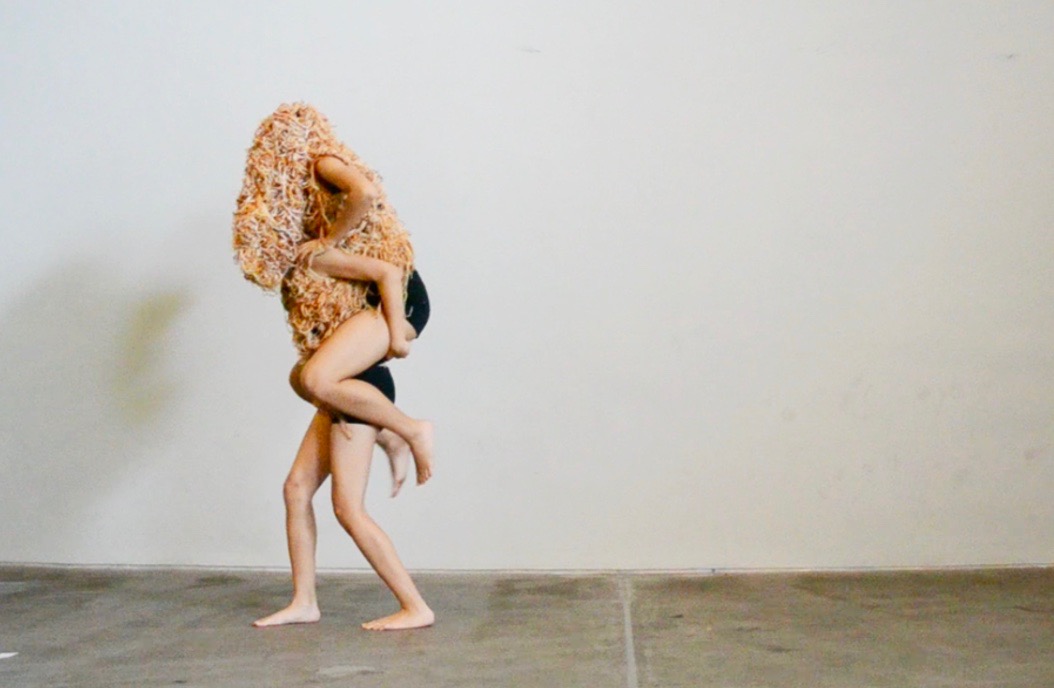The link to the video performance can be found here: https://youtu.be/zfFEAvAWRqU
Process:
The main research methods that were used to create this work were observation, comparative, materials, and collaborative.
Observation
I came about the idea of making clothing as a social form from observing people. I observed human interactions on the streets, couples making out in public, friends hanging out, dancers interacting with each other, and people’s body movement in relation to the environment or social situation they are in.
Comparative
Comparing was a very important aspect of my research. I had several artist references that included Rei Kawakubo for Comme de Garcons “Body meets dress, Dress meets body”, Iris Van Herpen for “Biopiracy” and Movana Chen for “Body Containers come to Life”. These artists dealt with the same topic I was dealing with – bodily movements. However, each artist manifested this concept in a different way and researching on them helped me realise the endless possibilities. It was also important to know how my works could be similar to theirs, and yet uniquely mine. For example,”Body meets dress, Dress meets body” expands the human body’s silhouette, however, my work entraps the body.
Materials
I used mainly polyester yarn for this work, I had to learn knitting from scratch and after learning it, I decided not to use traditional knitting technique for this work. I wanted to make a textile of my own, I tried using glue, knots and iron-on but to no avail, after several cycles of trial and error, I finally settled on just messing the yarn up and jamming it through the sewing machine, creating a seemingly organised mess. I also explored the stretchability of knit and how it feels on the human skin.
Collaborative
Collaboration was a very big part of my work and its processes. At first, I collaborated with dancers to come out with a choreography, however, it seemed slightly stagnant and that we were having very traditional forms of ballet. I needed it to be slightly wilder and slightly “messy”. I then collaborated with an actor and performed the piece together with her.
If I were to create a new work inspired by my original work, I would definitely work on the existing research methods I have used, but also adding on the aspect of interviewing and surveying. I would like to gather my audiences’ response to the work, perhaps make them try on the garment, let them become part of the performance and take notes. I would make an new iteration of my previous work out of the feedback I receive. Hence, the feedback then becomes the new work, and once again, the process also becomes the product.











